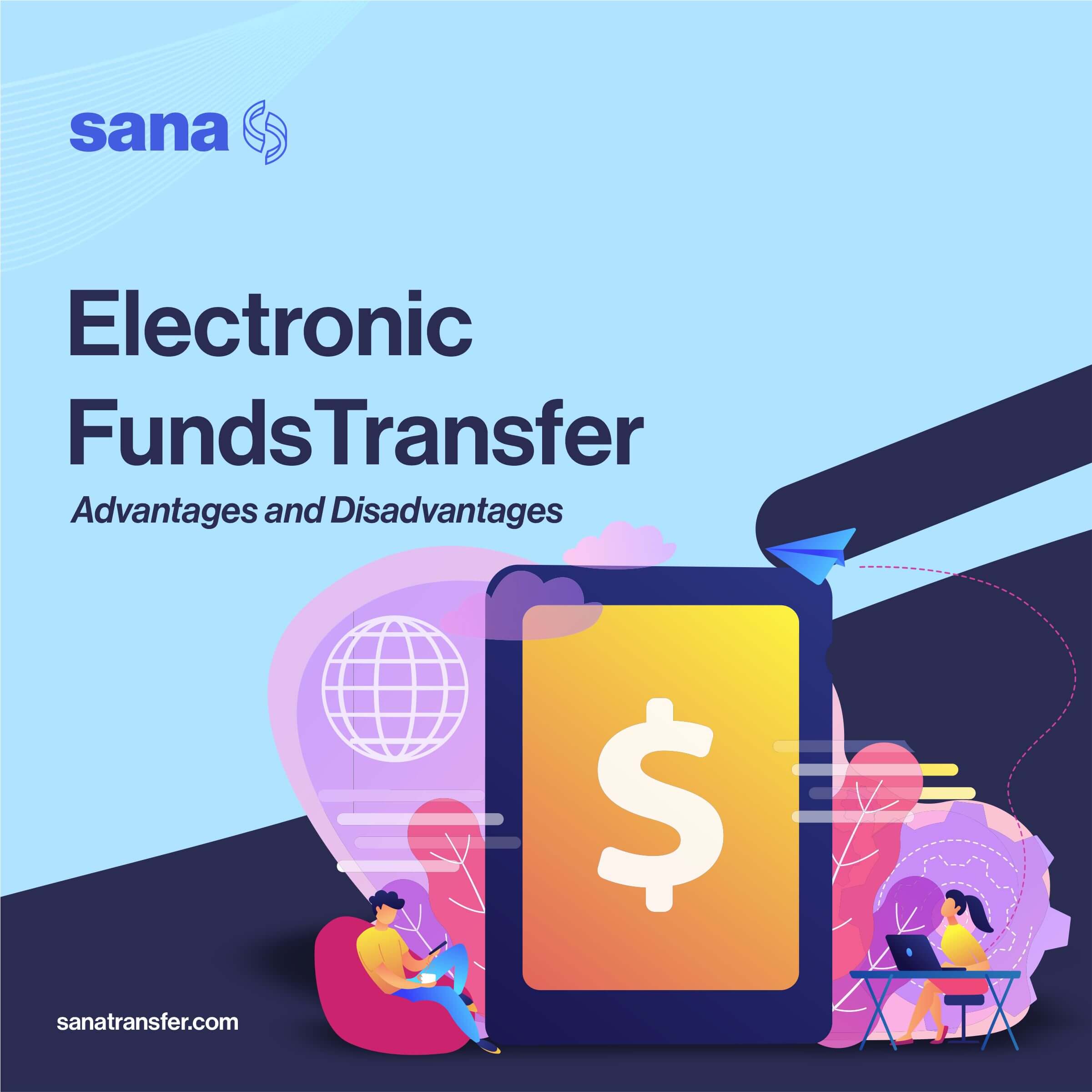Electronic Funds Transfer Advantages and Disadvantages
Here, we discussed Electronic Funds Transfer Advantages and Disadvantages in depth.

Technology is phasing out the traditional method of taking cash to the bank to transfer to another bank account. Basically, technological advancement has brought about electronic fund transfers (EFTs), which have made it possible for people to transfer money digitally. Today, EFTs are used almost everywhere due to their ease and convenience. Although electronic funds transfer advantages and disadvantages are limitless, we discussed a few that individuals and businesses today should know.
What is Electronic Fund Transfer?
An electronic funds transfer, popularly known as EFT, is the process of moving money from one person’s bank account to another digitally/electronically via a mobile network or computer. These transactions will be processed by the bank and the funds will be sent electronically to the receiver’s account. It takes about 1-2 days for EFTs to be completed, however, in some cases, it may be completed immediately. The cost for EFT payments generally varies depending on the commercial bank you use.
List of the Advantages and Disadvantages of Electronic Funds Transfers
As stated earlier, electronic funds transfer advantages and disadvantages are limitless, however, we will be highlighting a few of them below. The first section highlights the advantages, while the second one lists the disadvantages of EFTs.
Advantages of Electronic Fund Transfers (EFTs)
Here, we’ve provided a list of 10 advantages of using electronic fund transfers:
1. You can buy items without using a debit or credit card
Many businesses accept the use of an electronic cheque conversion to pay for products, even if traditional cheques are not accepted. Essentially, this implies that their customers can buy products without using a credit or debit card. So you don’t really need to have a debit or credit card as you can use the electronic cheque option to buy items online.
2. Speed
The speed of EFTs can not be compared to other alternatives. While some kinds of EFTs get your transaction completed immediately, others take just 1-2 days to get completed. They are far faster and easier to process than paper cheques. Generally, EFT payments are executed instantly for any online/offline purchase you make.
3. Cost Effective
Traditional money transfers are more expensive than EFTs due to the fees that your bank charges you. When you transfer via cash or cheque, you will have to pay for printing cheques or bills, postage, as well as the applicable transaction fee. However, with EFTs, you avoid many of these expenses and this makes them a very cost-effective solution.
4. Real-time and hassle-free payments
EFTs allow you to execute real-time transfers of money to the intended recipient’s account. Also, you can even transfer to remote locations instantly. You can do all of these through your smartphone or computer, with ease and convenience.
5. You can dispute any transaction completed by EFT
If you used an electronic funds transfer to complete a transaction and have any dispute with the transaction, you can inform your bank to investigate. Once you inform your bank, they will take immediate action by investigating anything that seems unauthorized or incorrect. Although it may take a while, everything should get resolved within a few days.
6. Most EFT transactions give recipients instant access to the funds
Since EFTs are sent electronically, they give recipients instant access to the funds. They wouldn't have to wait for a few days for the funds to clear before claiming or using the money. On the other hand, traditional cheques don't give the receiver instant access to the funds as they may need to wait for up to 14 days before the money becomes available.
7. Less human error
Cash deposits and cheque transactions are highly prone to human mistakes. Someone may miscalculate the total amount of money to be sent or lose track of the cheque or cash when it is in transit to the recipient. It is very common for cash or cheques to get lost when it is sent through mail, however, this doesn't occur with EFTs. EFTs greatly reduce the risk of your money getting lost or miscounted because they’re managed primarily by computers.
8. You can set up automatic payments/transactions with EFTs
You can set up some types of EFTs in such a way that allows money to be deducted from your account automatically anytime your monthly bill is due. The biller will be the person to initiate the transaction so you don't have to take any action to pay your bill every month. If you get too occupied and don't remember to pay your monthly bills, this option will help to keep all your accounts current.
You’ll have to fill out some paperwork if you want to use this option and can also inform your bank when you want to stop it.
9. EFTs are available globally
Many people make use of electronic funds transfers to send and receive funds internationally. Hence, it is a transfer service that you can use almost anywhere in the world. Online money transfer service providers made it possible for you to send money without leaving your house. To send seamless electronic transfers from Canada to any other part of the world, use the SanaTransfer app. It offers you an easy, cheap, and convenient way to send payments globally and can be downloaded on Android or iOS.
10. It is safe to send and receive funds via the EFT process
EFTs are generally considered very safe to send and receive money. Since EFTs primarily verify and transfer funds electronically, they generally involve a lesser risk of counterfeiting or theft than when handling traditional cash and cheques. Also, the process is secure since everything is done electronically.
In addition, payments are more foolproof with EFTs because a financial institution can only send cash that is available in an account. Once the money gets to the recipient, they can access it immediately.
Related Article - ACH vs. Wire Transfers: What’s the Difference?
Disadvantages of Electronic Fund Transfers (EFTs)
Here is a list of 7 disadvantages of using electronic fund transfers:
1. High transaction fees
Every money transfer service provider will charge you a flat fee for any transaction you initiate. Also, if you are sending money internationally, you will also be charged for the exchange rate. In some cases, the recipient will also be charged for the transaction. So every transaction you initiate will attract charges for both you and the recipient.
Generally, international transactions attract more fees than local transfers. If you prefer for the funds to be made available in real-time, your bank can charge you as high as 15% of the money you want to send.
2. Payments can still get declined if you use an EFT
Although it is not common, electronic funds transfers may sometimes come back as “returned,” declining your transaction. This result is similar to the bouncing of a cheque. If your electronic payment is declined, you must take immediate action and report to the bank to initiate another payment. Generally, banks do not try to reprocess any declined or returned transactions automatically. You have to initiate it again, but before you do this, ensure that you inform your bank that the transaction was declined.
Most banks will charge you a “returned EFT” fee for any transaction that gets returned for any reason. However, the flat fee for this is usually minimal. This is another reason why EFTs can be costly.
3. It allows you to buy items around the clock
The ease and convenience of using electronic funds transfers can become a major detriment for some people. People who are compulsive spenders may find it difficult to curb their habits if they use EFTs. The constant urge to purchase products online means you get free access to spend as you like 24/7 as long as you have a data connection.
4. If you lose any money during a wire transfer, it may be hard to recover
Many scams are involved in electronic funds transfers since the sender may not know that their fund isn’t being transferred for the intended purpose till the whole process has gone too far to stop. A thief will only need to take control of a person’s account for a few hours to be able to send funds to different locations.
Unfortunately, EFTs can also be withdrawn immediately, making it difficult to track the funds, especially for international transactions. So before you initiate any payment, make sure you cross-check all the details to ensure it is correct. Also, it is very risky to use EFTs to transfer cash to a person you don’t personally know.
Electronic funds transfer processes are generally non-reversible, so it is important to ensure that you really want to undergo the process. Senders are likely not going to be reimbursed once they initiate any transaction.
5. Banks report ETFs involving large sums to the government
Any electronic transaction involving a large sum of money will get reported to the government. So when it comes to this kind of transfer, there are no secrets, especially when moving large sums. Also, some financial institutions will require you to make an advance notice before they agree to send a huge sum of money to the intended recipient.
6. Wire transfers may get lost sometimes
There are so many crises that can arise when processing your payment via EFTs. Numbers may get transposed when you are writing down the account information, thereby causing complications. Some ETFs may even get misplaced when it is being processed between the sender and the receiver’s bank. Although this occurrence is highly unlikely, there is still a possibility for it to occur.
7. Availability of Funds
Some types of electronic funds transfers can take several days to get processed, while other types will just process immediately. Unlike cash or paper cheques, when you make a payment with EFT, the money must be available in your account right away. If the money isn’t available, your transaction gets denied.
Closing Thought
Some of the electronic funds transfer advantages and disadvantages have been highlighted above, so it is left to you to weigh them before deciding to use EFTs. Although transferring funds electronically can be very convenient and easy, you must still consider the high cost of the transaction. Also, this method is not so friendly when you want to move large sums.
Nevertheless, we can conclude that EFTs are great for both local and international payments. To transfer funds electronically from Canada to any other part of the world, use the SanaTransfer app. This app offers you convenience, competitive exchange rates, and cheap transaction fees.
SanaTransfer offers easy, fast and secure payment services with better rates and faster payouts for international remittance. Sign up now to get started.
